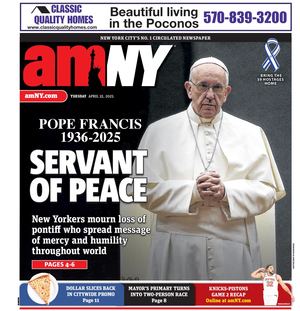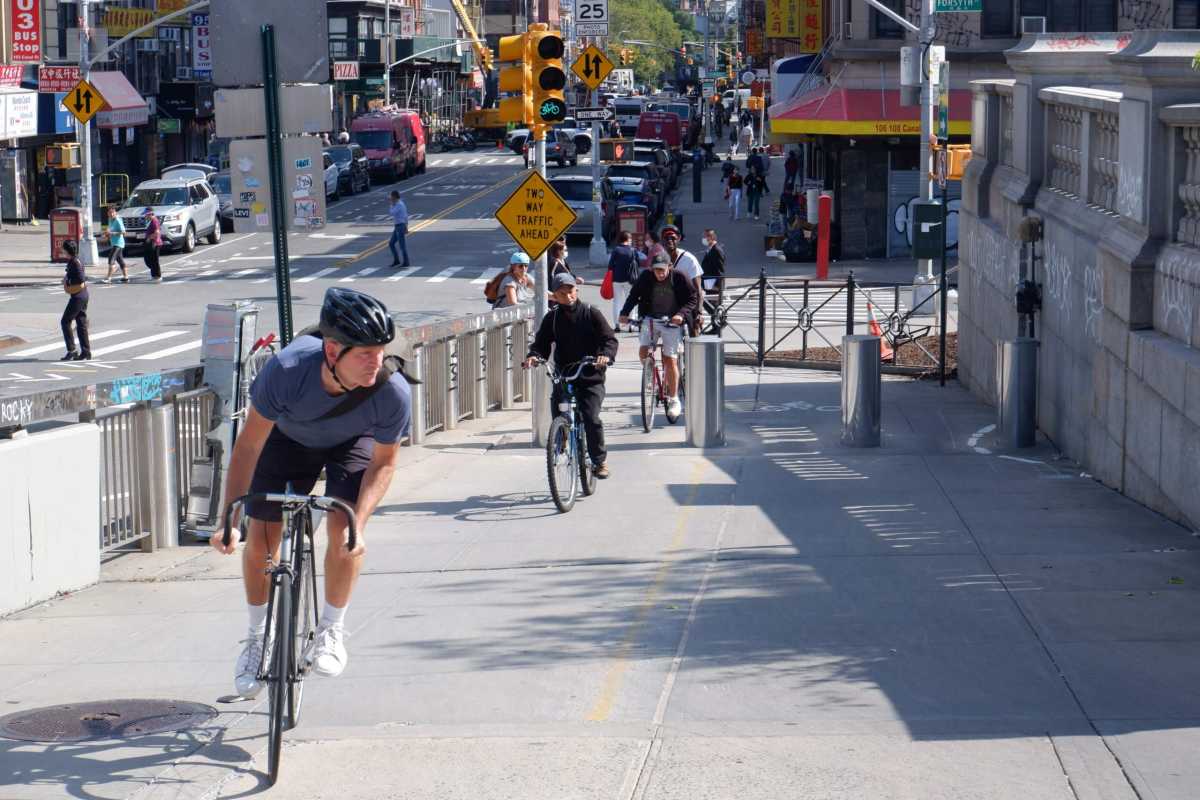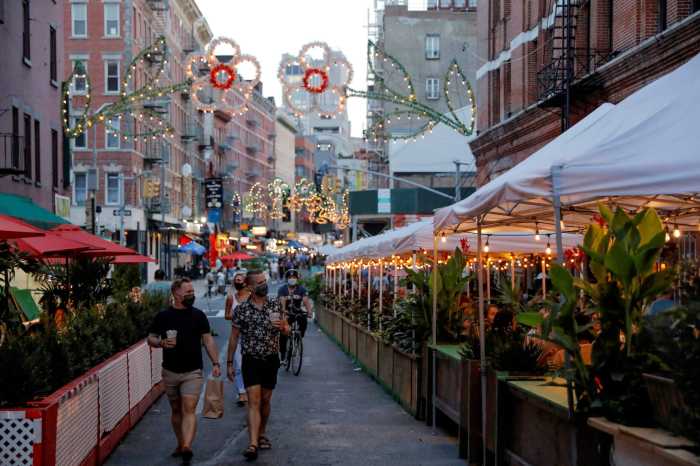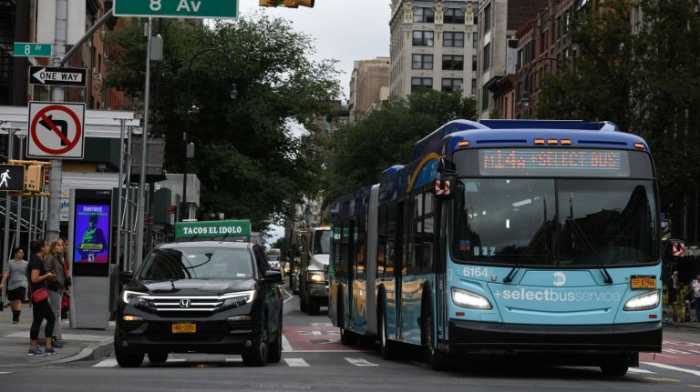For bicyclists, the good times are rolling on two wheels in New York City.
Cycling boomed in New York City during 2020, according to a new annual report by the Department of Transportation, confirming the much-hailed COVID-era bike boom in the Five Boroughs.
“If you look around with your own two eyes you already know it, bicycles are everywhere,” DOT Commissioner Hank Gutman told reporters at the foot of the Manhattan Bridge bike lane in Chinatown Thursday, Oct. 7.
DOT’s yearly Cycling in the City report of two-wheeler trends in the Big Apple shows that there were 1.8 million more bike trips in 2020 compared to 2019, a 33% increase, at several locations the agency logs counts, including the four East River bridges and Brooklyn’s Prospect Park West and Kent Avenue.
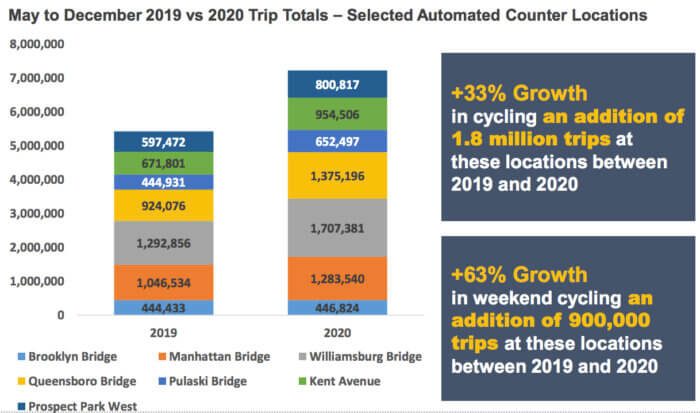
More people hopped on the saddle on weekends too, with a 63% bump in weekend cycling at these locations, or 900,000 more pedal pushers, according to the agency.
The bridges alone saw a 21% growth in cyclists, however, the Brooklyn Bridge — before it got a new bike lane on the roadway last month — was the outlier with a slight dip year-over-year and a whopping 30% decline from 2015-2020, according to the data.
The biggest increase was on the Queensboro Bridge at 35% more crossings in the last five years, followed by 22% more on the Williamsburg Bridge, and 12% higher on the Manhattan Bridge.
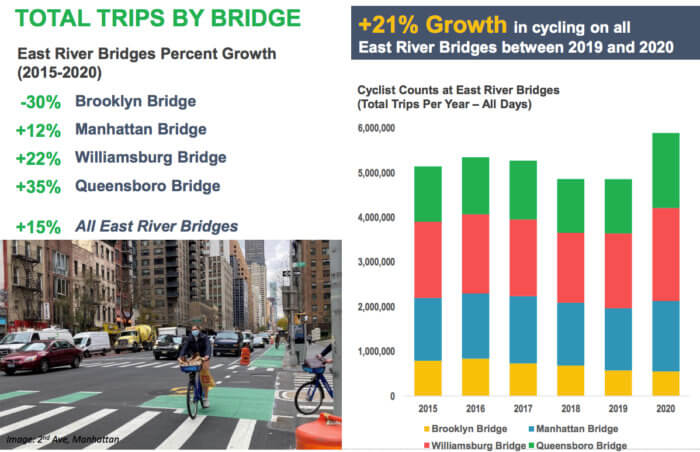
While DOT has hailed the bike boom of the first pandemic year, when many commuters shunned mass transit for fear of catching or spreading the coronavirus, the counts for 2021 show a slight decrease through August, according to the most recent numbers.
More people have returned to mass transit this year, with figures reaching a bit more than half of pre-pandemic levels on the Metropolitan Transportation Authority subways and almost two-thirds on its buses, according to recent MTA figures.
Gutman said the figures may get a boost from the new dedicated Brooklyn Bridge bike lane, which opened on the innermost Manhattan-bound car lane on Sept. 14 and replaced the tight boardwalk above that cyclists had to share with pedestrians and hordes of tourists.
“Let’s look at the numbers some period of time from now after we have had the benefit of the opening of the Brooklyn Bridge, I think that’s a game changer,” Gutman said.
The new Brooklyn Bridge bike lane has already seen a boost in ridership, while counts on the other three spans over the East River have remained stable, according to another DOT official.
“We want to let that data settle in to make sure it’s not just a bunch of people trying it out,” said Sean Quinn. “But more importantly, we haven’t seen decreases from the other bridges, so it seems like it is actually spurring some new ridership, people who weren’t riding before, are just trying it out, they are shifting to the bridge.”
The streets have been exceptionally dangerous for New Yorkers this year, with road deaths hitting an all-time high this summer compared to previous summers under the Mayor Bill de Blasio administration, according to a study by safety advocacy groups.
Meanwhile, car traffic has almost fully rebounded to pre-pandemic levels, according to analyses of bridge and tunnel crossings, but Gutman said the city is a safe place for bicyclists.
“It is definitely safe to ride a bicycle in New York City,” he said. “We’ve had unfortunate trends in some categories but in terms of cyclists the numbers have been moving in the right direction. That doesn’t mean it’s good enough, every fatality or serious injury is a tragedy, we’re aware of that, we focus on that.”
